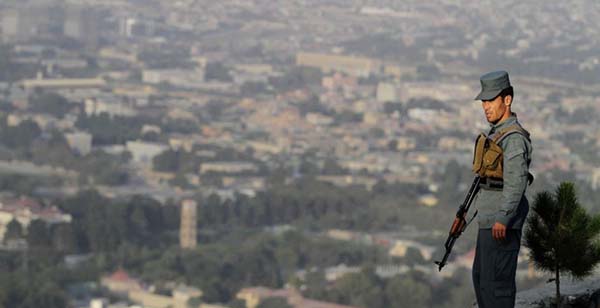Shall we celebrate Eid with the oozing blood of the henna-handed bride? With the gunshot wounds of the newlyweds or with the white beard of old men dyed with red blood? Visiting the bride’s grave decorated with her wedding gown will melt the heart of stone. She took all her hopes and wishes to the grave with her. Her tombstone reflects a sad tragedy which forces tears in visitor’s eyes. Her bride-chamber is her dark and soulless grave. Her white gown was changed to a shroud to cover her weak body riddled with bullets. But can shroud cover the militants’ inhuman treatments?
Along with the newlyweds, the tiny bodies of children and the frail bodies of old men and women were also tortured, shot and buried. The pair-beads in the hand of an old man – who was caked in his thick blood – mirrored his piety.
Perhaps you know the tragedy; Taliban militants halted three passenger vehicles in Ghor province on Friday. They singled out ethnic Hazara travelers, including women and children, lined them up on the roadside and shot in the head and chest. The incident which obviously is a sectarian one has triggered angers among Afghan populace. President Hamid Karzai – as usual – has condemned the incident deeming it a mere incident of civilian killing. Nonetheless, it was not a suicide bombing; the assailants targeted people from a particular ethnic groups.
The murderers are said to be the Taliban who have been released from the prisons. President Hamid Karzai himself has been a major proponent of releasing suspected militants from custody. This incautious act of him did not put him in collision course only with the Afghan people but also with foreign forces. However, the President never intended to call the Taliban militants less than “discontented brothers.”
When the US invaded Afghanistan in 2001, it did not have anything resembling democracy, the only guarantee for establishing liberal values such as human rights and freedom of speech. A constitution was developed, elections held, institutions created and last but not the least, an Afghan army was created. But since all this had been done without taking on board the traditional tribal values of the Afghan population and with little or no consideration given to its ethnic nuances, democracy began to wither even sooner than expected. Corruption, warlordism and the Taliban have all returned with a vengeance. The country resembles a quagmire from which the US/NATO/ISAF forces will soon be out.
Mullah Omar has said that the Taliban are set to take over Afghanistan; it is just a matter of time. For the last many months the rise in civilian deaths in Afghanistan and the failure of its armed forces to meet the challenges shows that Mullah Omar is not claiming victory in vain. Looking at the trends and patterns emerging from the Afghan insurgency, the fear is growing among political pundits that the country might turn into another Iraq and become a bedlam of more human disaster, something that can send the region into a political and security whirl, including Pakistan.
Still, for some, Afghanistan has not lost everything and has come a long way from what it had been when the Taliban ruled. Women are freer, the Afghan army in spite of its inabilities has been conducting operations against the enemy, the media has been resurrected, freed and developed, more children are going to school and most importantly, the deadlock surrounding the presidential election runoff is being sorted out, a rare positive development in Afghanistan where ethnic considerations often trump national interests. When US Secretary of State John Kerry intervened and achieved consensus between the candidates over an audit of the election results, the hope arose that things can still be worked out democratically by Afghans.
Afghanistan’s success lies in the development of a consensus that allows for an inclusive form of government where the interests of all the ethnic groups are taken care of. Afghanistan was locked in a civil war for years after the Soviets and the US moved out in 1989 and left a vacuum to be eventually filled by the Taliban. A resurgent Taliban are the real threat that can pull down Afghanistan and send it hurtling down the road of becoming another Iraq.
The Afghan government remains highly suspicious of Pakistani intelligence and military leaders, for the most part believing they are still in cahoots with Taliban and Haqqani leaders calling the shots for the war in Afghanistan from safe havens across the border.
Although, the reports say that Pakistan has maintained the operations it has carried out in Northern Waziristan effectively eliminated much of the terrorist threat in the region, experts in Kabul have argued otherwise.
Sectarian violence will have catastrophic outcomes for Afghanistan. Lack of attention from government increases chances that incidents such as that in Ghor would repeat. The government must immediately act to capture the militants who were involved in the killing and bring them to justice. Passing messages of condolences will cure no pain.
It is crystal clear that insecurity is a great dilemma for Afghan citizens. Only few days ago I traveled to Ghazni province intending to celebrate Eid along with my family. When I was stopped and searched, on the way, by the Taliban, I remembered what a friend of mine said to our Indian boss – who is now in Taliban’s capture. He said that while traveling, Afghan citizens “lose weight” due to extreme fear of the militants. Hence, Afghans will celebrate the day when everyone feels themselves secure and breathes a sigh of relief.

